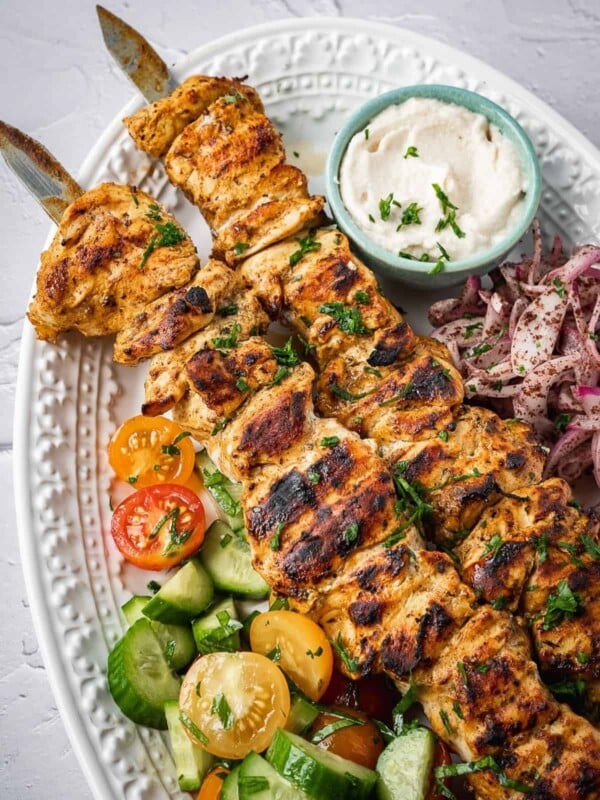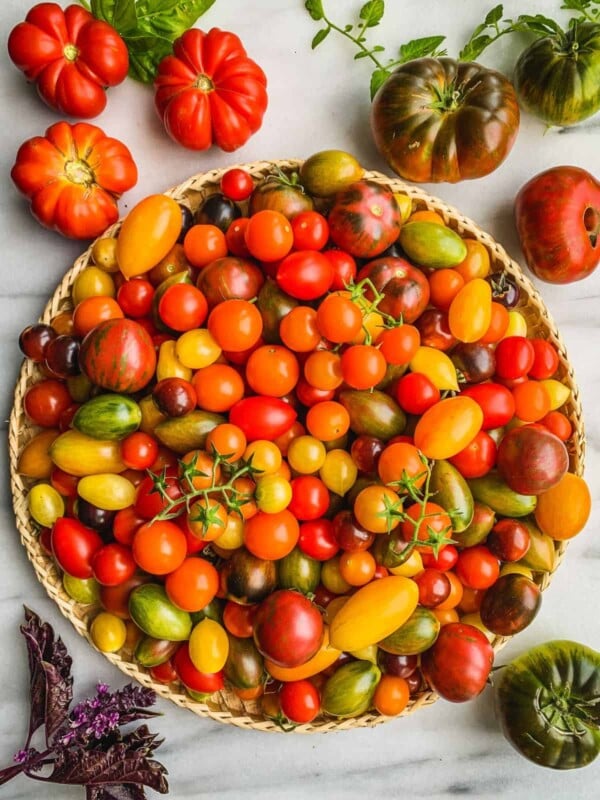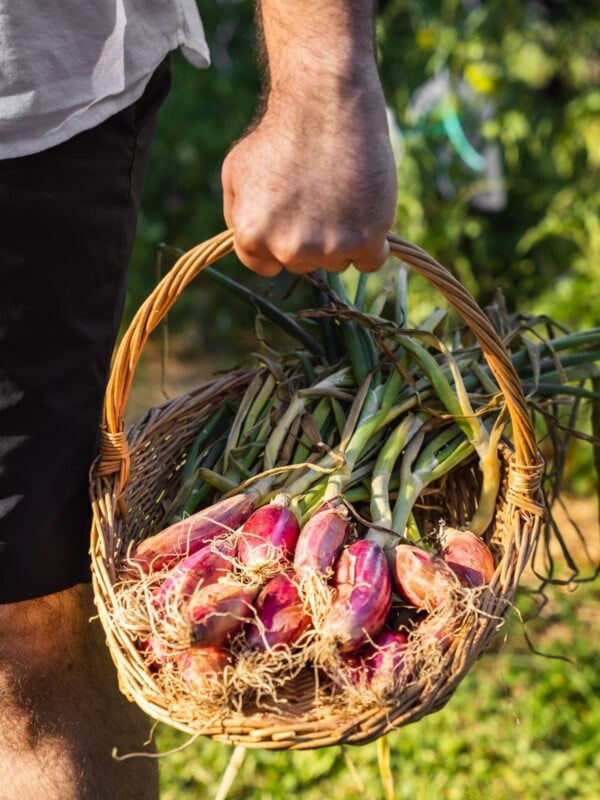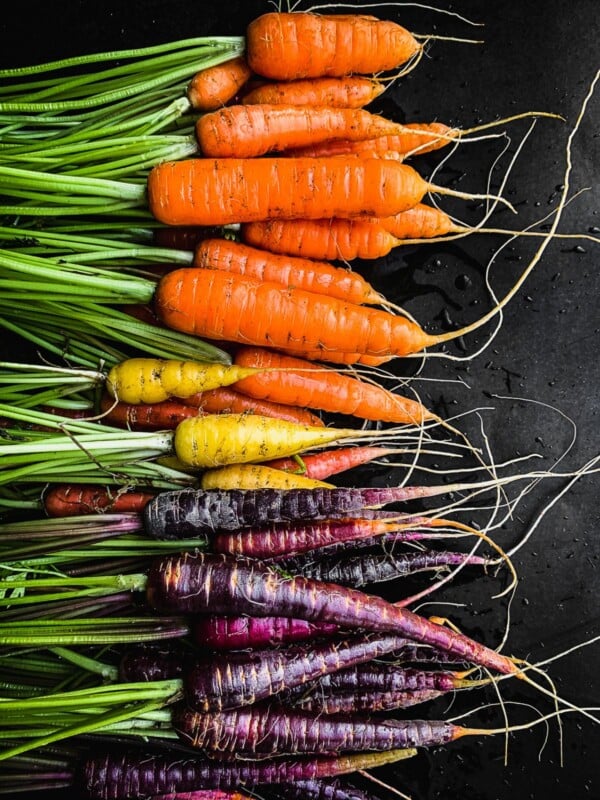Oregano (Origanum vulgare) is a hardy annual herb often used in Mediterranean and Italian dishes. It is a species in the Lamiaceae, or mint, family, which includes other popular herbs such as mint, basil, rosemary, thyme, sage, marjoram, and lavender. The family also includes medicinal herbs such as bee balm, salvia, and catnip.
This post covers everything you need to know about this herb, including different varieties, culinary uses, growing, storing, preserving, substitutions, and recipes.

Table of Contents
Oregano is a perennial herb with a bold, savory flavor with hints of pepper, earthiness, and subtle bitterness.
Note: Mexican oregano (Lippia graveolens or Lippia berlandieri) is a different plant. It is also a popular culinary herb but has a different flavor profile.
History
Oregano originated in the Mediterranean and southwest Europe but has since spread worldwide. The use of oregano can be traced to ancient times; some believe the word oregano has been derived from the words oros (mountain) and ganos (brightness, ornament, or joy).
However, the Oxford English Dictionary indicates that the word may have originated in Africa. With the expansion of the Roman Empire, oragano spread throughout Europe. It became popular in North America after World War 2.

Culinary uses
Oregano is used both fresh and dried. It is a fundamental ingredient in pasta sauces, pizzas, and other tomato and cheese dishes. It also enhances the flavors of grilled meats, roasted vegetables, soups, and stews. Oregano is a component in herb blends like Italian seasoning and Herbes de Provence.
Oregano varieties
- Common oregano has a strong flavor, is very common, and is standard on pizzas and tomato sauces.
- Greek oregano has a strong, almost spicy flavor that works well with marinated meat. It has an upright growth habit.
- Italian oregano has a milder flavor, often used in Italian cuisine, prized for its sweet and aromatic notes. It is a hybrid variety with a lower, more compact growth habit.
- Golden oregano has golden-yellow leaves and a milder flavor. It is often used for ornamental purposes.
- Variegated oregano is a cultivar of common oregano with beautiful striped leaves.

Other uses
Oregano in aromatherapy, alternative medicine, and as an insect repellent. It is also commonly used as a ground cover in landscaping.
High-level nutritional information
Oregano is a source of calcium, iron, Magnesium, Phosphorus, Potassium, Sodium, Zinc, copper, Manganese, and Selenium. As well as vitamins A, B-6, E, C, and K.
How to Grow
Oregano can be started from seed indoors or in a greenhouse 6 – 8 weeks before the last frost and transplanted outside once the threat of frost has passed. You could also buy seedlings from a nursery. If you know someone with an oregano plant, you could start with a cutting: clear the lower leaves on your cutting and immerse in water. Pot it up once you see visible roots.

Oregano prefers full sun and well-draining soil. When the plants are young, they need consistent watering, but as they mature, they should be watered deeply less often, giving the top soil time to dry out in between.
Pruning consistently will allow the plant to become bushier and stave off flowering. It also prevents the stems from getting too leggy or woody. If your plant is getting large, consider dividing it every few years.
I personally grow it in the ground, in raised bed gardens, and in container gardens.
In colder climates, it is best to mulch around the base of the plant in the fall. If it freezes where you live, trim back two to three inches from the soil when you mulch. Consider preserving this last harvest from your plant.
Favorite Varieties to Grow and Use
Common or Greek oregano are easy to find as seeds or transplants and grow with excellent flavor. Consider variegated oregano if you are looking for something you cannot find in the store. The taste is similar but adds extra beauty to the garden and your dishes.

Culinary Substitutions
- Marjoram is a close relative of oregano and will get you closest in flavor, though it is slightly sweeter and milder.
- Italian seasoning has oregano as a component, along with parsley, basil, thyme, and rosemary. It has the oregano flavor with the added depth of the other herbs.
- Thyme has a savory and earthy flavor and can substitute well in soups, stews, and marinated meats.
How to Store
Harvesting and using it as needed is best; however, you can store it in the fridge. Put the stems in a cup of water and cover the leaves loosely with a plastic bag. Change out the water as needed. Alternatively, you can wrap it in a paper towel and place it in a plastic bag.
Recipes that Feature Oregano
Levantine Recipes
Appetizers
Appetizers
Recipes
How to Preserve
- Drying herbs: Dried oregano maintains its flavor very well. To dry, cut your stems, bundle them together, and hand them upside down until dry. Then, remove the leaves from the stem and store them in an airtight container in a dark place. Alternatively, you could use a dehydrator.
- Freezing: Pick the leaves, wash them, spin them dry in a salad spinner, or blot them with towels and freeze them in a freezer-safe container. You can flash freeze on a sheet tray for best results and then transfer to a container. The leaves will be wilted and discolored when you use them, so this is best when used in cooked dishes or warm sauces.
If you have any questions, please take a moment to leave a comment below. It’s such a help to others who want to try the recipe. For more Urban Farm and Kitchen, follow along on Instagram, Facebook, and Pinterest, visit the Urban Farm Shop, or subscribe for new posts via email.















